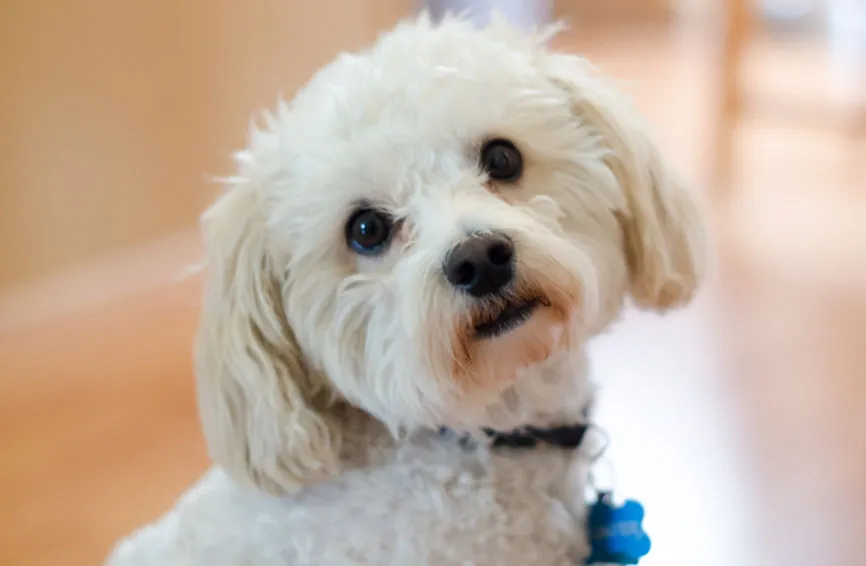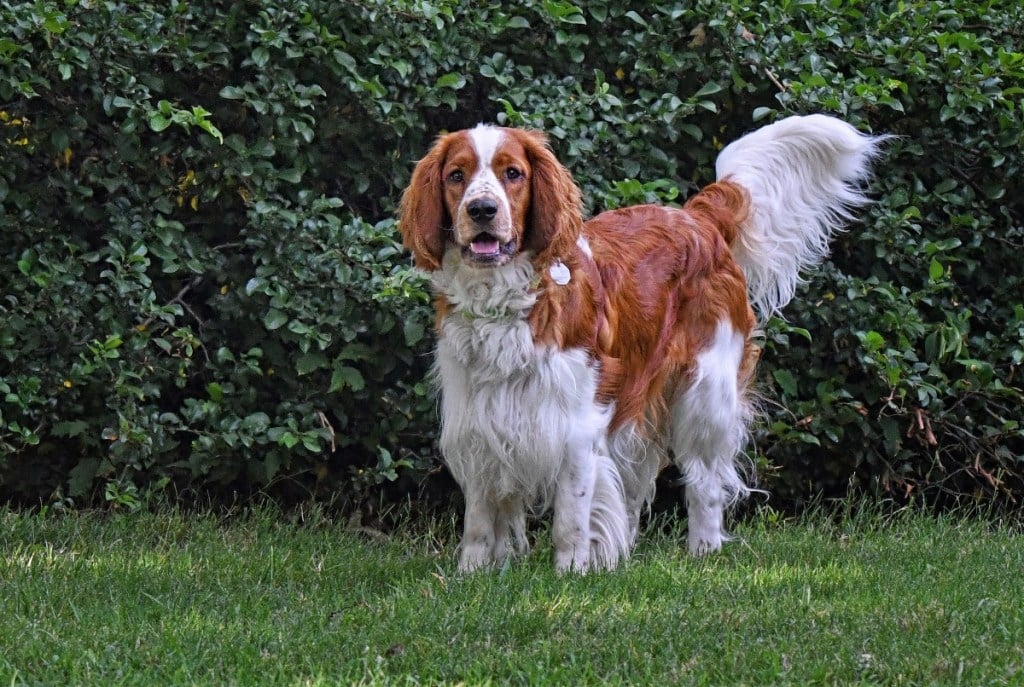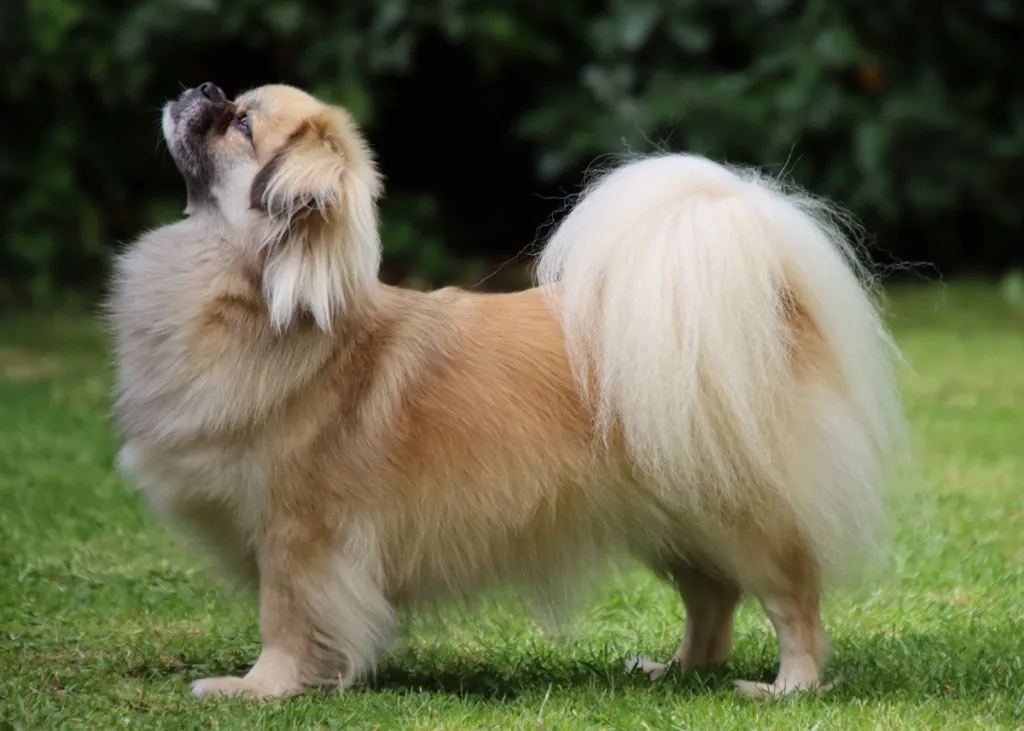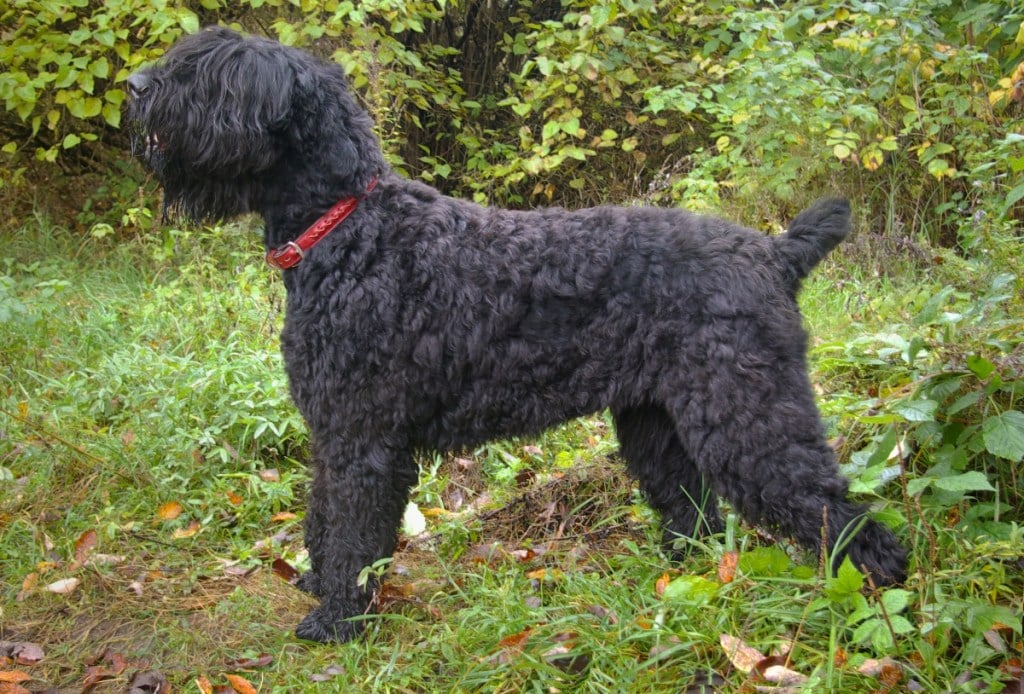Introduction to Maltipoos
Small, adorable, and affectionate, a Maltipoo is a hybrid breed of dog and a cross between a Maltese and a poodle. These dogs make wonderful family companions and thrive in small spaces with people who love them.
The cross is typically made between a Maltese dog and a toy or miniature poodle to create a dog with a puppy-like appearance, low shedding, and a friendly demeanor in a canine companion. Maltipoos are a fairly new hybrid breed of dogs but may be just the type of pup you’ve been looking for to introduce into your household.
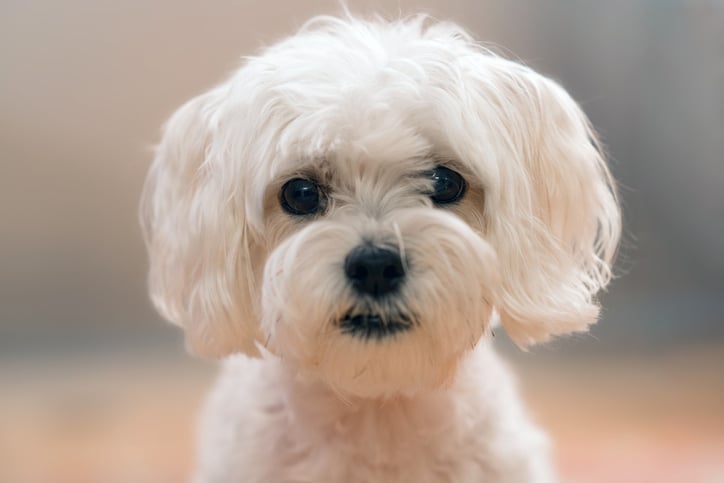
Size of Maltipoos
In general, Maltipoos are small dogs. However, their size can vary depending on the dogs that were mixed to create this crossbreed. As adults, Maltipoos typically weigh between five and 20 pounds, with most adults remaining below 15 pounds. Male and female Maltipoos are typically the same size and stand eight to 14 inches tall, on average. Maltipoos are typically fully grown by one year of age.
Some breeders have created smaller versions of Maltipoos, called Teacup Maltipoos. However, there are ethical concerns about these very small Maltipoos because of the health issues associated with teacup-size dogs.
Here’s how big you can expect your Maltipoo to get as it grows older and reaches adulthood.
| Weight Chart | Newborn | 4 months | 9 months | 12 months |
| Male and Female Maltipoos | 0.1-0.5 pounds | 2.5-5.5 pounds | 4-9 pounds | 5-12 pounds |
Characteristics of Maltipoos
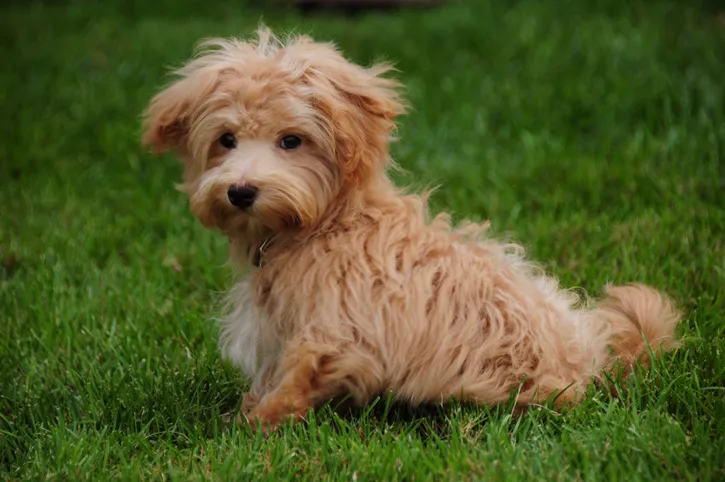
Maltipoos have many great characteristics that are desirable to pet parents. They are generally adaptable, friendly, trainable, and have minimal grooming needs. However, these dogs are very affectionate and prone to separation anxiety if left alone for long periods of time.
As you get to know a Maltipoo’s personality, here’s what you can expect based on his or her breed characteristics.
| Breed Characteristic | Level (High, Medium, Low) |
| Affectionate with People | High |
| Good with Kids | Medium to High |
| Good with Pets | High |
| Need for Exercise | Low |
| Energy Level | Medium |
| Intelligence Level | Medium |
| Able to Be Trained | High |
| Amount of Barking | High |
| Amount of Shedding | Low |
Although there is no such thing as a truly hypoallergenic dog, many people with allergy concerns choose Maltipoos because of their low shedding. However, even a Maltipoo can carry allergens through dander and saliva.
First-time pet parents often do well with Maltipoos because they are easy to train. It is worth mentioning, however, that many Maltipoos are barkers. They often require training to know when it is acceptable to bark and when it’s not. They are sensitive to people’s needs and make good emotional support dogs who love to cuddle and get lots of attention.
History of Maltipoos
Maltipoo dogs have only become popular over the past couple of decades as a relatively new crossbreed. However, breeders have been crossing different types of dogs for thousands of years to achieve desired characteristics, such as size, coloration, and temperament. Maltese dogs originate from the country of Malta, while poodles can trace their history back to Germany.
Over the years, people have crossbred dogs, such as the Maltipoo, to create a dog that is hypoallergenic and has very few health problems. However, every dog is different and carries the genetic traits of its parents regardless of crossbreed type. Celebrities have often gravitated towards the cute, cuddly, and photogenic Maltipoo. Most of today’s Maltipoos are first-generation breedings between Maltese and poodle dogs, so there is still much left to learn and observe about these dogs in the future.
Maltipoo Standard Information
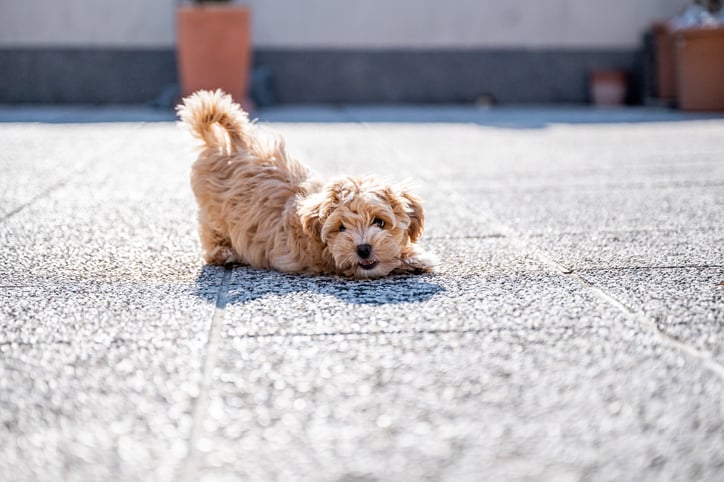
Maltipoos are a hybrid breed, created by crossing a Maltese with a Poodle. They are not considered purebred dogs and therefore they are not eligible for registry in the American Kennel Club. Although a Maltipoo cannot compete in an AKC show, they can be registered in a different hybrid registry or designer dog registry. For example, the North American Maltipoo Club & Registry is an organization that has resources for Maltipoo rescue dogs and responsible crossbreeding standards.
Since Maltipoos are a crossbreed and not a pure breed of dog, there is no well-established breed standard for Maltipoos. However, these types of dogs share certain appearance-related characteristics that make them identifiable and relatively predictable for prospective pet parents.
For example, the coat of a Maltipoo is usually wavy or curly with a medium-to-long length. Their coats can be nearly any color because Maltese dogs and poodle dogs come in various colors. However, Maltipoos are most commonly white or cream-colored. Some dogs can have two or three colors represented in their coats or even have a marbled appearance.
Caring for Maltipoos
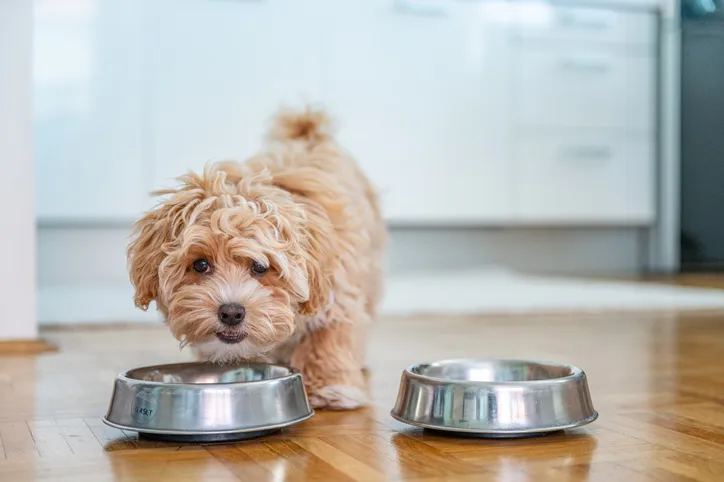
Maltipoos thrive in households with older children (who are cautious while handling small dogs) and also in homes with older adults who may have limited mobility. They may not be the best pet for rough-and-tumble toddlers, who could injure a Maltipoo while playing. These dogs love having people around them all the time and don’t need a lot of exercise to stay healthy.
Here are some general tips for taking the best care of a Maltipoo.
Best Living Environments:
- Small apartments in a city
- Suburban homes with a fenced yard space
- Homes with older children and elderly adults
- People around throughout the day to give affection
- Outdoor access for going to the bathroom and short walks
Type of Exercise:
- Half hour of walking per day
- Playing games with family members in the house
- Playing fetch with a ball outside
Mental Enrichment:
- Going on errands with family members
- Lots of interaction with people
- Playing chase
Training Strategies:
- Clever dogs that enjoy playing games
- Train to walk on a leash
- Train early to socialize and help the dog gain confidence
Grooming Tips:
- Not much shedding at all
- Brush the coat every other day
- Coat trims from a groomer or DIY once or twice per year
- More frequent trimming around the face
- Trim hair inside ears to prevent infection and soreness
- Trim nails once or twice per month
Common Health Problems of Maltipoos
Even though Maltipoos are relatively healthy crossbreed dogs, they still are prone to a variety of health conditions that can reduce their quality of life, especially with age. Some of these conditions are more common with either purebred Maltese dogs or poodle dogs, or they may just be prevalent in small dog breeds more generally. The average life span of a Maltipoo is 10 to 13 years old.
These are some of the most common health issues (including some basic details of the conditions) that often arise with Maltipoos.
- White shaker syndrome (causes tremors, poor coordination, and rapid eye movements)
- Patellar luxation (slipped stifles)
- Epilepsy and seizures
- Progressive retinal atrophy (degenerative eye disorder)
- Portosystemic shunt (liver circulation issue)
- Legg-Calve-Perthes disease (femoral head necrosis)
- Colitis (inflammation in the colon)
- Hypoglycemia (low blood sugar)
- Dental disease
Ear infections, skin irritations, diarrhea, allergies, and digestive issues are also common among Maltipoos. Especially while your Maltipoo is a puppy, it is very important to prevent falls and jumping off of high surfaces. Maltipoo puppies are very fragile and can be easily injured if they are handled roughly by an overly enthusiastic child or have access to dangerous areas of a home.
Diet and Nutrition for Maltipoos
Maltipoos are not generally picky eaters. These pups are easy-going at mealtimes and eat one cup of dry dog food per day. This should be split into a half cup in the morning and a half cup in the evening.
Unless recommended by your veterinarian, avoid wet dog food; these foods may exacerbate dental issues. Poodles are prone to various dental problems that could be passed on to your Maltipoo. You can keep your Maltipoo’s teeth healthy by brushing them daily, visiting a veterinary dentist, and providing dental chews to remove excess tartar.
Where to Adopt or Purchase Maltipoos
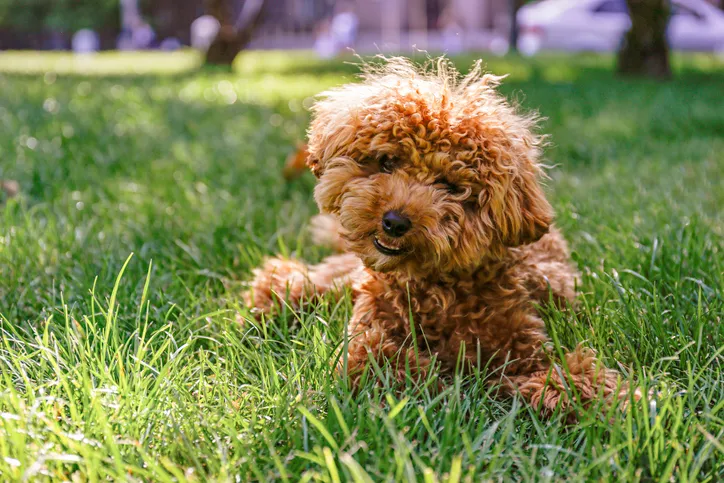
It can be very challenging to find a reputable breeder and avoid puppy mills when you want a Maltipoo in your life. This is because the Maltipoo is not registered with a kennel club and these dogs are highly sought after by people wanting designer dogs. If you choose to go with a breeder, you should insist on meeting the parent dogs of the puppies and inquire about health checks for the parents. It is typically safe to bring a Maltipoo puppy home at the age of eight weeks old, and you can expect to pay $1,000 or more for the puppy.
You may be able to find a Maltipoo at a rescue shelter, however, especially if the dog was turned over by a celebrity who didn’t have time to take care of the dog or by an elderly pet parent who passed away. There are Maltipoo-focused rescue organizations in various parts of the country that understand these types of dogs well and can accommodate their needs.
Related and Similar Breeds
As you now understand from this guide, the Maltese and poodle are most closely related to the Maltipoo because they are the parent breeds. But there are other similar types of dogs that you might also be interested in if you like Maltipoo-type pups.
These include the following:
- Malshi (Maltese/shih tzu crossbreed)
- Malchi (Maltese/Chihuahua crossbreed)
- Morkie (Maltese/Yorkshire terrier crossbreed)
- Cockapoo (poodle/cocker spaniel crossbreed)
- Maltipom (Pomeranian/Maltese crossbreed)
Pet Insurance for Maltipoos
Anticipating the future health needs of crossbreed dogs, such as Maltipoos, can challenging, but you can be prepared for whatever comes your dog’s way with pet insurance from Healthy Paws. Our Maltipoo insurance plans cover accidents, illnesses, genetic conditions, cancer, emergency care, and alternative care so you can take the very best care of your beloved companion.
On our website, you can get a free quote for pet insurance by telling us just a few details about your Maltipoo. We are also advocates for homeless pets and give back through the Healthy Paws Foundation. With our nonprofit grant program, we contribute to homeless pets’ medical needs and make life better for pups still searching for their forever homes.
